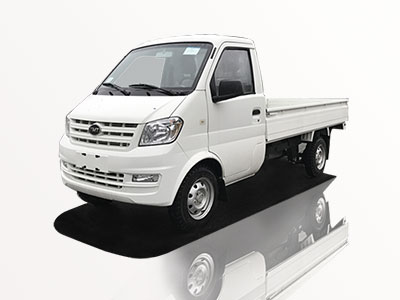Introduction
When it comes to construction and heavy-lifting industries, a skip box for crane operations is an essential tool that enhances efficiency and safety. These structures are designed to facilitate the easy and safe transport of materials, debris, and equipment. In this article, we will delve deeply into what skip boxes for cranes are, their types, benefits, practical applications, and much more.
Understanding Skip Boxes
What is a Skip Box?
A skip box, often referred to as a skip bin, is a container designed for transporting waste or materials. When attached to cranes, these containers can be lifted to various heights, making them ideal for construction sites, demolition projects, and industrial environments.
Main Types of Skip Boxes
Skip boxes vary in size, shape, and purpose. Here are some common types:
- Standard Skip Box: Typically rectangular, these can hold various materials, including debris and waste.
- Heavy-Duty Skip Box: Designed for heavier materials such as soil and stone, these boxes are reinforced for added strength.
- Open Top Skip Box: Ideal for bulk items that need to be loaded from the top, often used in demolition scenarios.
- Tipping Skip Box: Features a mechanism allowing it to tip and empty its contents easily, reducing manual labor.
Benefits of Using Skip Boxes for Crane Operations
Enhanced Safety
Using skip boxes for crane operations significantly improves site safety. Cranes can lift heavy loads without workers needing to be in hazardous areas, minimizing the risk of accidents and injuries.
Increased Efficiency
Skip boxes streamline the process of material movement. With a crane, transporting multiple boxes in one go can save time and expedite construction schedules.
Cost-Effective Solution
Using skip boxes helps reduce waste disposal costs. Their capacity enables larger bulk loads, meaning fewer trips to disposal sites, leading to operational cost savings.
Environmental Benefits
Skip boxes are an environmentally friendly choice. They promote recycling by allowing sorted materials to be transported easily, reducing landfill waste.
How to Choose the Right Skip Box for Your Crane
Consider Your Needs
Assess the nature of the materials you’ll be transporting. Heavy-duty materials require a sturdy skip box, while lighter items can be placed in standard containers.
Size and Capacity
Make sure to select a skip box that fits your volume requirements. Common skip sizes range from 2 to 10 cubic meters, depending on the load you typically handle.
Material Construction
Skip boxes are made from various materials, including steel and plastic. A steel box can provide superior durability and weight support, whereas plastic may be lighter and easier to transport.
Compliance with Regulations
Ensure that the skip box meets local safety and building codes. This includes weight limits and materials allowed for use and disposal.
Practical Applications of Skip Boxes for Crane Operations
Construction Sites
Skip boxes are a staple on construction sites. They help in the organized disposal of excess materials, making the job site neater and safer.
Demolition Projects
In demolition, skip boxes play a crucial role in managing debris. These boxes can quickly transport rubble, concrete, and other wastes to disposal sites.
Industrial Sites
In factories, skip boxes are useful for gathering scrap materials, waste products, and other leftover items that need to be disposed of safely.
Landscaping Projects
For landscaping and renovation projects, skip boxes can help transport soil, rocks, and other bulk materials. Their robust construction can handle the load efficiently.
Examples and Tips for Effective Use of Skip Boxes
Example 1: Construction Site
On a large construction site, you may have multiple skip boxes designated for different types of waste—one for metals, one for plastic, and one for general debris. This organization allows for quick sorting and disposal post-project.
Example 2: Demolition
During a building demolition, employ multiple open-top skip boxes to allow workers to load materials quickly from various angles, enhancing productivity.
Tip 1: Regular Maintenance
Regularly check your skip boxes for any damage or wear and tear, especially after heavy use. This maintenance will help prolong their lifespan and ensure safety.
Tip 2: Load Wisely
Avoid exceeding the box’s weight limit and distribute the weight evenly to prevent tipping during lifting. Knowing the weight of materials can keep your operations safe.
Frequently Asked Questions (FAQs)
What is the weight limit for skip boxes?
Weight limits vary by box size and construction. A standard skip box typically has a limit of 1 to 2 tons, while heavy-duty skip boxes can hold more. Always check the specifications.
Can I hire skip boxes for short-term use?
Yes, many companies offer rentals for skip boxes on a short-term basis. This option can be a cost-effective solution for a specific project.
Are skip boxes reusable?
Yes, skip boxes are designed for repeated use. They can withstand various materials and conditions as long as they are adequately maintained.
How do I dispose of waste in a skip box?
Efficiently dispose of waste by sorting materials before loading them into the skip box. Ensure not to exceed the fill line marked on the container to maintain weight limits.
What are the transport options for emptying skip boxes?
When full, skip boxes can be lifted and transported by cranes or trucks to designated disposal sites. Always confirm the best transport method based on your location and waste requirements.
Conclusion
In summary, skip boxes for crane operations play a vital role in enhancing safety and efficiency across various industries. Understanding their types, benefits, applications, and proper usage will empower you to optimize your waste management processes, whether on a construction site, during demolition, or in industrial settings. As you plan your projects, consider the crucial role that skip boxes will play in achieving a cleaner, safer, and more organized work environment.





